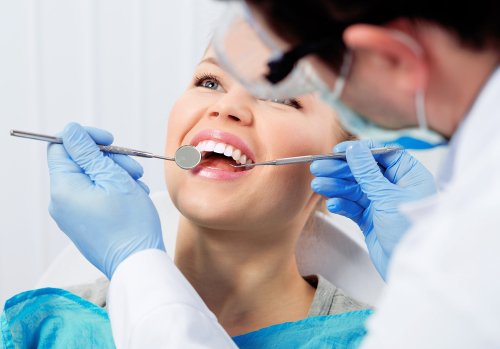Some Of Legacy Orthodontics
Some Of Legacy Orthodontics
Blog Article
Not known Facts About Legacy Orthodontics
Table of ContentsThe Single Strategy To Use For Legacy OrthodonticsHow Legacy Orthodontics can Save You Time, Stress, and Money.The Legacy Orthodontics Diaries8 Simple Techniques For Legacy Orthodontics8 Simple Techniques For Legacy Orthodontics
At Advanced Orthodontics, we give patients with a holistic therapy experience. On top of that, we provide flexible treatment routines, versatile repayment choices and an enjoyable, satisfying experience. leesburg braces. Call ( 480) 357-4900 today for additional information and schedule a consultation.An orthodontist is a dental practitioner educated to identify, protect against, and treat teeth and jaw abnormalities. They deal with existing conditions and are trained to identify problems that may develop in the future. Orthodontists collaborate with individuals of any ages, from youngsters to adults. Individuals often link a best smile with healthiness.
Malocclusion, or misaligned teeth, can result in oral issues, consisting of dental caries, gum illness, and hard or unpleasant eating. Not every person is born with straight teeth. If you have a poor bite or big spaces between your teeth, you might want to speak with a dental professional concentrating on orthodontic care.
Indicators on Legacy Orthodontics You Need To Know
( Image Debt: DigitalVision/Getty Images) Orthodontists utilize fixed and removable oral devices, like dental braces, retainers, and bands, to change the placement of teeth in your mouth. Orthodontic therapy is for oral abnormalities, including: Misaligned teethBite issues, like an overbite or an underbiteCrowded teeth or teeth that are also much apartJaw misalignmentThe objective of orthodontic treatment is to enhance your bite.
A healthy bite guarantees you can consume, eat, and talk appropriately. While you could think of orthodontists as primarily for youngsters or teens who need dental braces, they can fix dental issues at any kind of age. Orthodontists participate in college, dental college, and orthodontic school. After graduation, they spend 2 or 3 years in an orthodontic residency program.
All orthodontists are dentists, but not all dentists are orthodontists. Orthodontic residency programs offer intensive, concentrated instruction for oral professionals. They concentrate on 2 areas: How to correctly and safely move teeth How to properly guide growth in the teeth, jaw, and faceOnce an orthodontist has actually finished training, they have the alternative to end up being board licensed.
4 Easy Facts About Legacy Orthodontics Explained
Imbalance, or malocclusion, is the most usual reason individuals see an orthodontist. It is hereditary and is the result of dimension distinctions between the top and reduced jaw or between the jaw and teeth. Malocclusion results in tooth overcrowding, an irregular jaw, or uneven bite patterns. Malocclusion is usually treated with: Your orthodontist affixes metal, ceramic, or plastic square bonds to your teeth.
Some people need a headwear to aid relocate teeth into line with pressure from outside the mouth. A retainer is a personalized device that maintains your teeth in area.
They're frequently made use of on youngsters. They can create extra space in the mouth without having to draw teeth. If you have a serious underbite or overbite, you might need orthognathic surgery (also called orthodontic surgery) to lengthen or reduce your jaw. Orthodontists make use of cords, surgical screws, or plates to support your jaw bone.
You might need to see an orthodontist if you have: Crowding or not adequate area for all of your teethOverbite, when your upper teeth come your base teethUnderbite, when your base teeth are as well much forwardSpacing or issues with gapsCrossbite, which is when your upper teeth fit behind your bottom teeth when your mouth is closedOpen bite or a vertical space between your front bottom and top teethMisplaced midline, when the center of your bottom and upper teeth do not line up Fixing a dental malocclusion can: Make attacking, chewing, and speaking easierImprove the symmetry of our face and your overall appearanceEase pain from temporomandibular joint disordersDifferent your teeth and make them less complicated to clean, helping prevent tooth decay or cavities It's typically a dental expert that first notices misaligned teeth during a regular exam.
Legacy Orthodontics Can Be Fun For Everyone

During your very first orthodontic appointment, you'll likely have: A dental examPhotos taken of your face and smileDental X-raysPanoramic (360 level) X-rays of your face and headImpressions to create mold and mildews of your teethThese tests will help your orthodontist understand just how to wage your therapy. braces. An orthodontist is a dental expert that's had training to treat your teeth and jaw
An orthodontist is focused on your bite, so something like a cracked tooth would certainly be taken care of by a dentist. Orthodontists are concentrated on your bite, or the method your teeth fit with each other, and the straightness of your teeth.
Ever before asked yourself exactly how stars constantly seem to have perfectly lined up teeth? Orthodontists are oral specialists that focus on dealing with abnormalities in the teeth and jaws.
Legacy Orthodontics Can Be Fun For Anyone

While dental braces are one of the most commonly acknowledged orthodontic therapy, orthodontists have a diverse toolkit at their disposal. The particular strategy picked depends on the intensity of the instance, the patient's age, and individual preferences. These tried-and-true braces use a system of braces adhered to the teeth and connected by wires.
Clear aligners, like Invisalign, are a prominent choice for people looking for a much more very discreet treatment choice. These detachable trays are personalized to considerably shift the teeth's placement. Headgear might be utilized in conjunction with braces or aligners to apply additional targeted forces, specifically for dealing with jaw disparities. In instances of narrow jaws, palatal expanders can be used to develop room for proper tooth placement.
Report this page